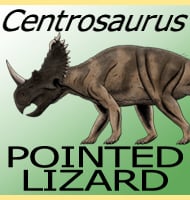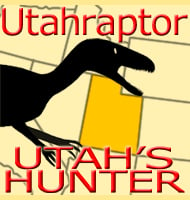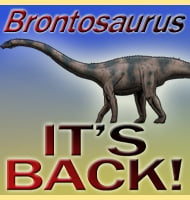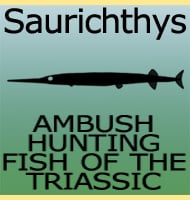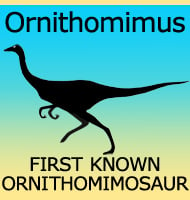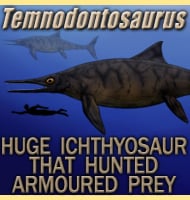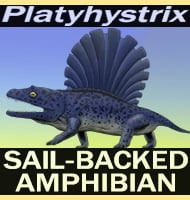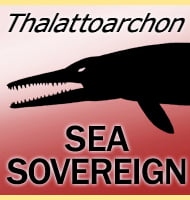In Depth
Coahuilaceratops attained overnight fame amongst the ceratopsian dinosaurs because it is thought to have the longest brow horns of any within the group. Although no single complete horn has yet been found, palaeontologists studying Coahuilaceratops spent a lot of careful time and effort comparing the available material to other similar chasmosaurine ceratopsians to produce a reconstructed length of one hundred and twenty centimetres. The nasal horn however is in stark contrast to the brow horns above the eyes and is severely reduced in size. The large size of the horns is taken as a means of display for Coahuilaceratops, not only to recognise others of the species but to impress members of the opposite sex. Presumably the largest horns would belong to the most mature and hence most successful individuals.
The location of Coahuilaceratops remains in Mexico indicates that this ceratopsian was active in the southern regions of ancient Laramidia, the western portion of North America that at the time of the late Cretaceous was separated from the eastern half (Appalachia) by the Western Interior Seaway. Southern Laramidia however did not have the same kind of climate as modern day Mexico. Back then there was a much higher moisture content in the climate with expanses of lush vegetation that could easily support large numbers of herbivorous dinosaurs such as ceratopsians like Coahuilaceratops. The main reason for this is that the sea levels were much higher which produced a warmer, wetter climate of estuaries that flowed into the closer sea. However this region probably still suffered from hurricanes like it does today, and with the climate being much warmer during the Cretaceous, these hurricanes may have been more frequent and more powerful. Aside from increased winds and rainfall, hurricanes can also cause storm surges where the sea floods vast portions of lowland areas which could prove devastating to the animals living there.
Exact predator prey relationships between Coahuilaceratops and carnivorous dinosaurs continues to be under study, but one possibility of potential predators could be the shorter snouted southern tyrannosaurs like Bistahieversor and Teratophoneus. Although either one of these predators probably would have loathed to tackle a fully grown Coahuilaceratops, they would have been a very real and serious danger to juveniles and adults that were old and infirm.
Further Reading
– Horned dinosaurs (Ornithischia: Ceratopsia) from the Upper Cretaceous (Campanian) Cerro del Pueblo Formation, Coahuila, Mexico. New Perspectives on Horned Dinosaurs: The Royal Tyrrell Museum Ceratopsian Symposium. Indiana University Press, Bloomington 99-116. – M. A. Loewen, S. D. Sampson, E. K. Lund, A. A. Farke, M. C. Aguill�n-Mart�nez, C. A. Leon, R. A. Rodr�guez-de Rosa, M. A. Getty & D. A. Eberth – 2010.

